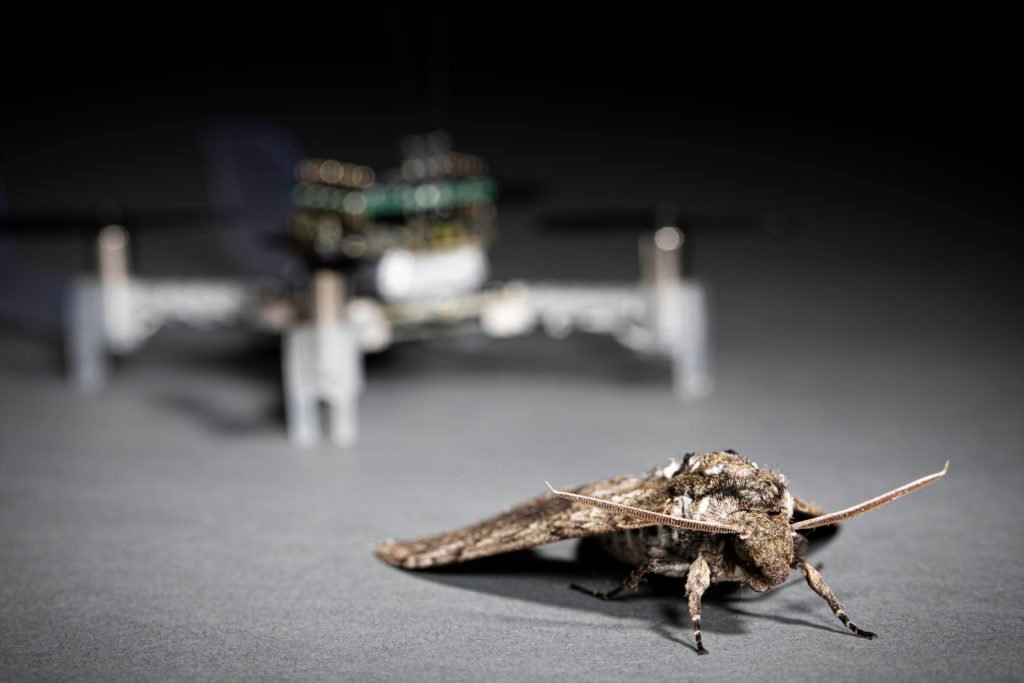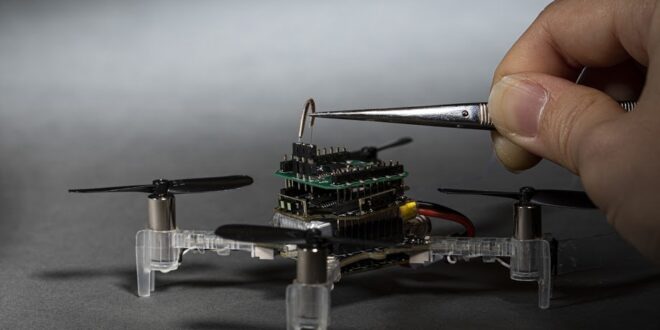Meet the Smellicopter. Smellicopter is a tiny drone developed by scientists at the University of Washington, capable of detecting smells like gas leaks, explosives, or even the survivors of a natural disaster. This amazing, obstacle avoiding UAV doesn’t use a man-made sensor to smell: it uses a moth antenna to navigate towards an odor.
A research paper published in IOP Science describes Smellicopter as “A bio-hybrid odor-guided autonomous palm-sized air vehicle.” The advantages to such a vehicle are clear: the tiny drone can travel in places that humans cannot or should not: the rubble of buildings after a natural disaster; zones where chemical leaks or spills may have occurred; or conflict zones that may contain chemical or explosive weapons.
The truly unique aspect of this amazing little drone is the use of a moth antenna: tiny, delicate, and amazingly sensitive.
Caption: A team led by the University of Washington has developed Smellicopter: an autonomous drone that uses a live antenna from a moth to navigate toward smells. By adding tiny wires into either end of the antenna (the arc being attached here), the researchers were able to connect it to a circuit and record its responses to a puff of a floral scent. Credit: Mark Stone/University of Washington
“Nature really blows our human-made odor sensors out of the water,” said lead author Melanie Anderson, a UW doctoral student in mechanical engineering. “By using an actual moth antenna with Smellicopter, we’re able to get the best of both worlds: the sensitivity of a biological organism on a robotic platform where we can control its motion.”

Caption: A team led by the University of Washington has developed Smellicopter: an autonomous drone that uses a live antenna from a moth to navigate toward smells. Smellicopter can also sense and avoid obstacles as it travels through the air. Shown here is a hawkmoth in front of the Smellicopter.
Credit: Mark Stone/University of Washington
Miriam McNabb is the Editor-in-Chief of DRONELIFE and CEO of JobForDrones, a professional drone services marketplace, and a fascinated observer of the emerging drone industry and the regulatory environment for drones. Miriam has penned over 3,000 articles focused on the commercial drone space and is an international speaker and recognized figure in the industry. Miriam has a degree from the University of Chicago and over 20 years of experience in high tech sales and marketing for new technologies.
For drone industry consulting or writing, Email Miriam.
TWITTER:@spaldingbarker
Subscribe to DroneLife here.
https://dronelife.com/2020/12/08/smellicopter-scientists-develop-tiny-drone-that-uses-moth-antenna-to-locate-smells-video/
 Unmanned Aerial Vehicle The latest drone news
Unmanned Aerial Vehicle The latest drone news

